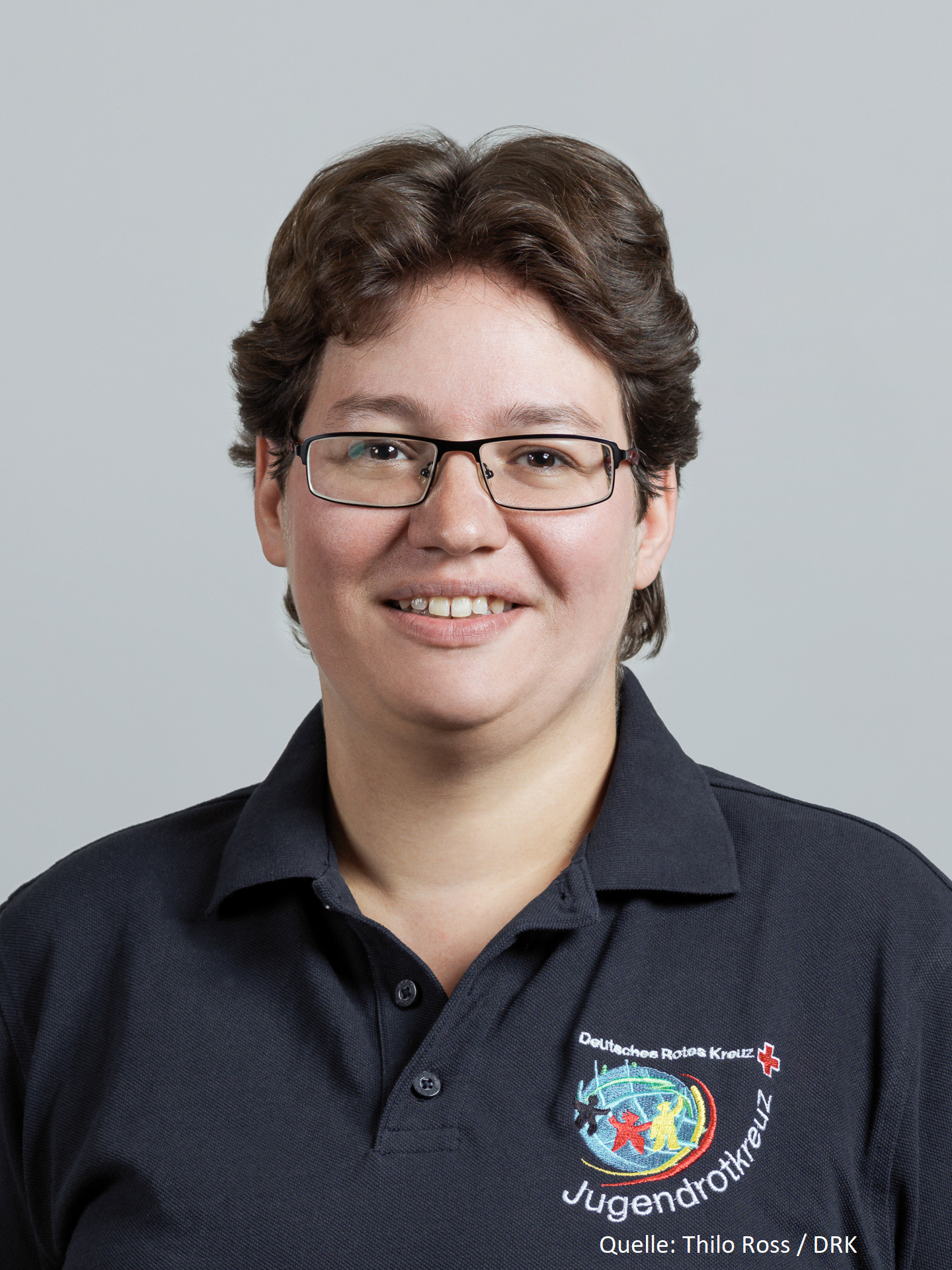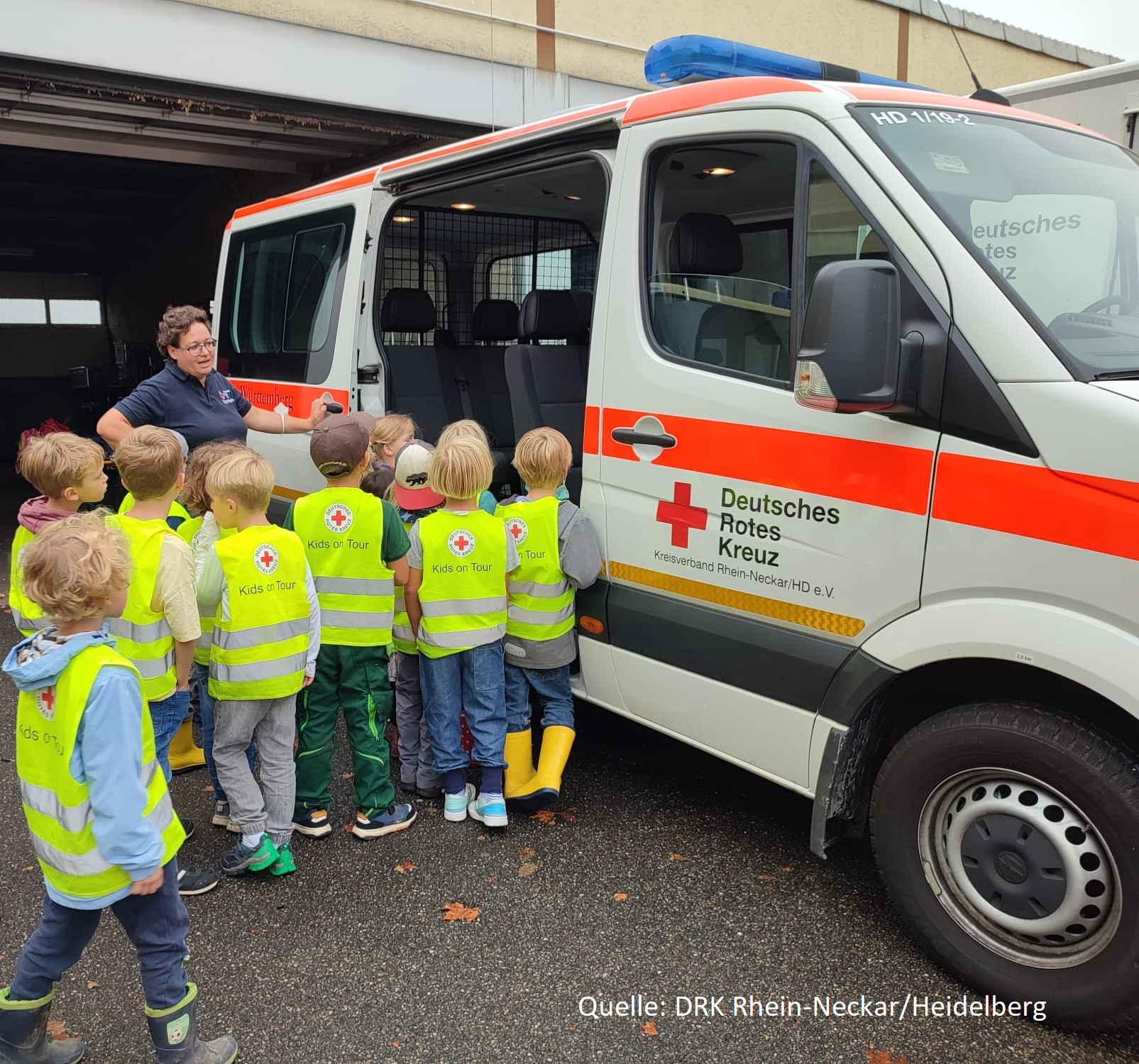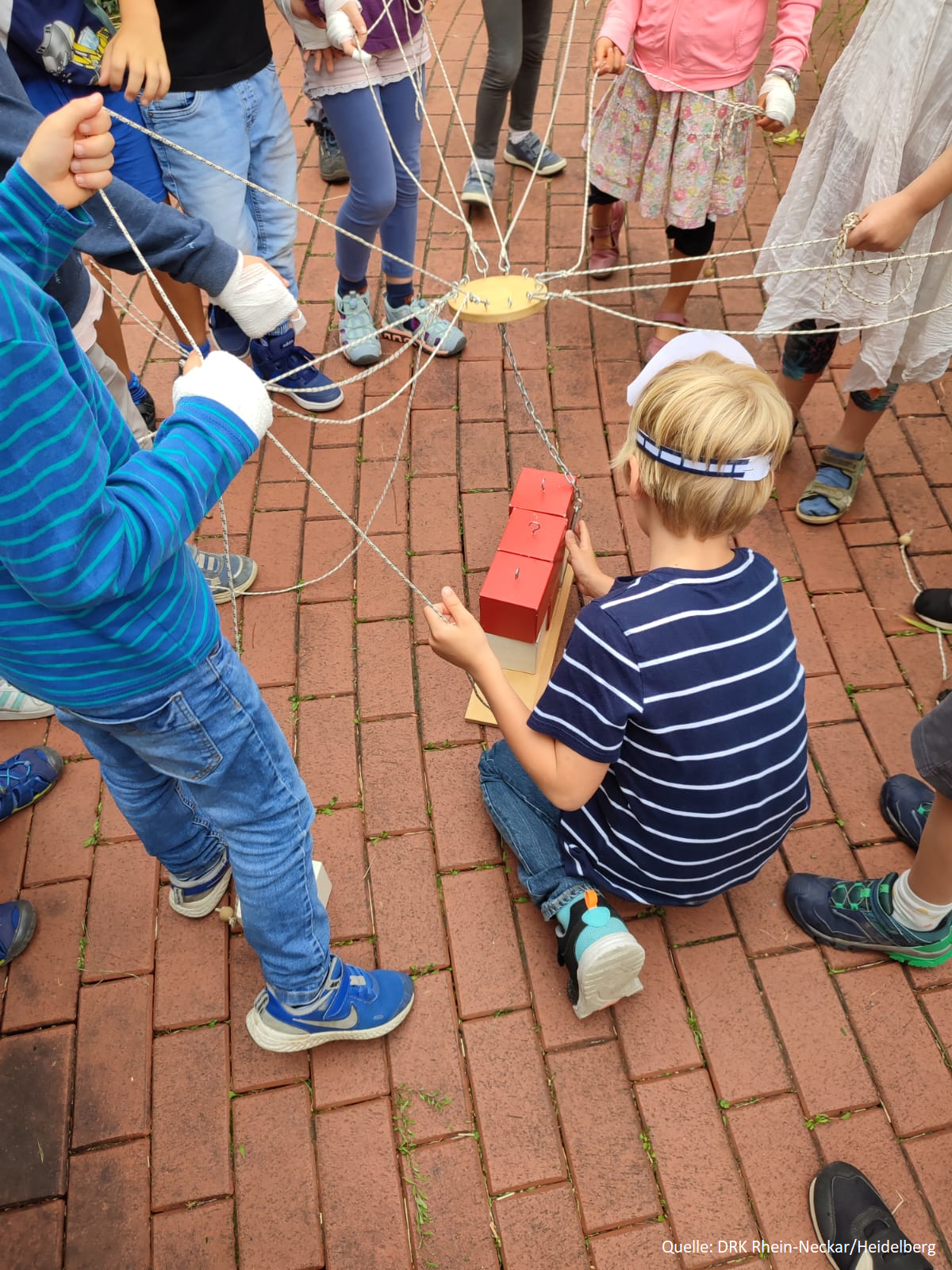06.08.2024 | Guest contributions, Reportage
Today, we have the pleasure of speaking with Irene Hillger. Since 2001, she has been involved with the Youth Red Cross, served as a youth group leader for twelve years, and has worked with hundreds of children. Additionally, in collaboration with the Red Cross in Heidelberg, she initiated the “School Starter Weeks,” a program where preschool children can explore various emergency services professions over three weeks.
 This project was recognized in 2023 with the “Helping Hand” award from the Federal Ministry of the Interior and Homeland (BMI) in the “Youth Engagement” category. In our conversation, she shares her experiences of volunteering with children.Whether as a group leader or organizing fun, play, and sports events, Irene Hillger, a trained pediatric nurse, is passionate about introducing children and adolescents to first aid.
This project was recognized in 2023 with the “Helping Hand” award from the Federal Ministry of the Interior and Homeland (BMI) in the “Youth Engagement” category. In our conversation, she shares her experiences of volunteering with children.Whether as a group leader or organizing fun, play, and sports events, Irene Hillger, a trained pediatric nurse, is passionate about introducing children and adolescents to first aid.
Every Child Has Experienced an Emergency
“You can start teaching children to help as early as kindergarten,” Hillger explains. To show children how they can assist in emergencies, she visits kindergartens and schools with the Red Cross, talking with the children. In small workshops, they teach the kids what to do when another child is not feeling well—for instance, not to walk by but to stop and ask what happened. “When you ask, every child has experienced an emergency and has been able to help a little,” Hillger says. Helping, for a kindergarten child, could mean fetching a teacher or comforting a distressed peer with a hug.
First Responders of Tomorrow
Starting at age six, children in the Heidelberg area have the opportunity to meet weekly in a group to learn more about first aid. They learn about different medical conditions—like heatstroke in summer or hypothermia in winter. They discuss what could happen and how to react in each situation. For example, they might role-play a sports injury as a group. Even in elementary school, children can become “school paramedics” if they wish.
With a First Aid Kit and Reflective Vest in the Schoolyard
These children are invaluable during the school day. They keep an eye out during recess, equipped with their first aid kits and perhaps a reflective vest, ready to help if another child gets hurt, Hillger explains. As they grow older, their ability to assist in school increases. In secondary schools, “school paramedics” are not only available during breaks but also assist their classmates beyond that, supporting the school’s first aid staff. They are knowledgeable about various issues: from stomachaches to dizziness, nausea, and sports injuries. Some of the children who participated in Irene Hillger’s first aid group still greet her years later. “It always makes me happy—they seem to have good memories of the project,” she says, smiling.
Three Weeks of Intensive Blue-Light Careers Training
Beyond group activities, her volunteer work with children includes organizing an annual camp with over 100 participants. A special project since 2016 has been the “School Starter Weeks”: for three weeks before starting school, future first graders can explore various emergency services professions and learn how they, too, can help others. This not only brings joy to the children but also eases the burden on parents, who often need to figure out how to fill the five-week gap between the end of kindergarten and the start of school. During the School Starter Weeks, the children are under full-day care by the Red Cross, go on excursions to various rescue organizations, and learn about different jobs and activities through play.
More Than Just Band-Aids
The program usually starts with a get-to-know-you session at the Red Cross facilities, Hillger shares. Since it’s part of the Red Cross tradition, the children first receive a small first aid course. Here, they learn what first aid is, how to apply bandages, and how to handle wounds. Then, the children visit the ambulance station, where they get a close look at the ambulance and other Red Cross vehicles because, as Hillger emphasizes, “the Red Cross is more than just band-aids.” Often, the program includes a visit to the rescue dog unit, where children learn how the dogs are trained and how they search for people. In one exercise, the children hide in a park and are found by the dogs—a favorite activity.
Firefighting, Visiting a Holding Cell, and Boat Rides
The children also get to explore other emergency service professions. A trip to the fire department has always been a part of the program, Hillger reports. At the fire station, the children see what a firefighter wears and what’s inside a fire truck. They even get to use a small fire hose—a highlight Hillger says is “always a fantastic activity.” When thinking about emergency services, many children immediately think of the police, so a visit to the police station in Heidelberg is also on the agenda. At the station, a police officer demonstrates the various uniforms used for different occasions. If the holding cell is available, the children can take a look inside—along with, of course, the police car. If time allows, a visit to the Technical Relief Agency (THW) or the German Life Saving Association (DLRG) is also included. At the THW, children might try out the grabber tool, while at the DLRG, they can go for a boat ride, examine diving equipment, and learn how to throw a lifebuoy.
 Breaks Are Important Too
Breaks Are Important Too
Since the children are transitioning from kindergarten to school, they also need breaks. “When you go on an outing every day for three weeks, you notice they get tired,” Hillger says. That’s why sometimes the group just does crafts at the base station, or the supervisors take the children to the playground, the woods, or a water playground if it’s hot.
When Small Thoughts Grow Big
What remains from volunteering with children? Do today’s children become tomorrow’s helpers? Hillger immediately recalls cases where school paramedics went on to become professional paramedics. And sometimes, former group members become doctors: “It happens again and again that we plant the seed of an idea, and it grows into a career aspiration,” Hillger says. She acknowledges that they don’t always know what becomes of the children later, as not all those who take up volunteer work end up with the Red Cross—some join the THW, the Maltesers, or other organizations. “But we must recognize that even with the small activities we do, we still have an impact on children and young people,” she emphasizes. Sometimes, they nurture future volunteers, and sometimes it’s just “the helping thought that we spread and support.”